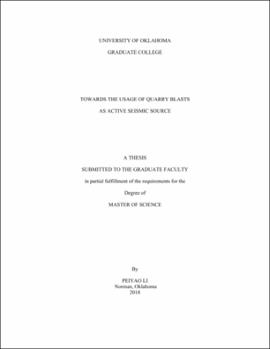| dc.description.abstract | Active seismic sources are often used to obtain subsurface structure via seismic imaging. The geophone’s capability to capture signals at lower frequencies is significantly improved, thus, we are no longer restricted to use the conventional seismic source for imaging. Hence, the choice of the seismic source can shift to an unconventional seismic source, such as the traffic noise, slow-slip events, and quarry blasts, and all these choices are economical and environmental friendlier. For the intention of obtaining the better understanding of subsurface structure in Mills Creek, southern Oklahoma, we designed a receiver line of 72 receivers with spacing of 105m, and the total length of 7,455m, located 120m away from the west side of the quarry exploitation field for 28 days. Here, we use the quarry blasts as an active seismic source and propose a workflow to extract the information that is essential for seismic imaging, such as the source wavelet, wave type identification, origin time and location estimation, we also discuss the observed structure in the study area. | en_US |
